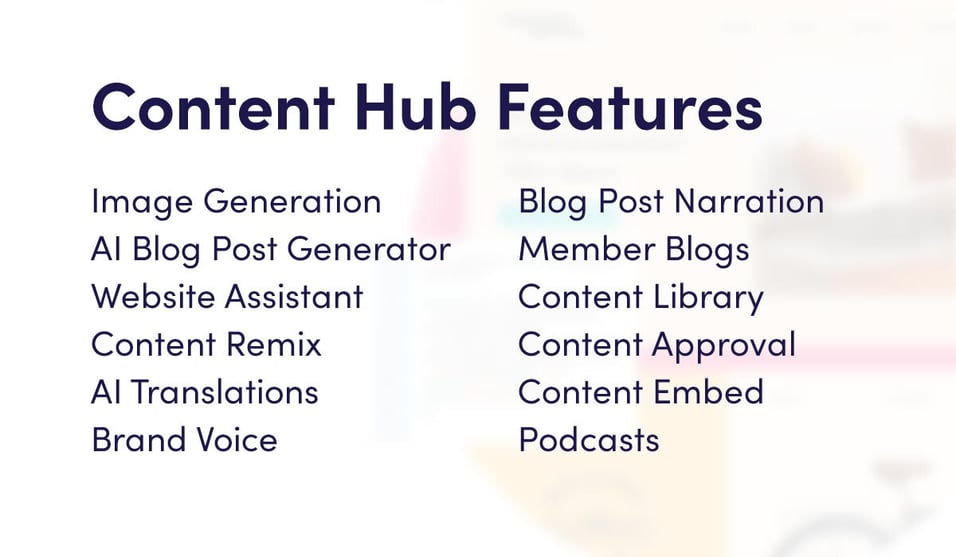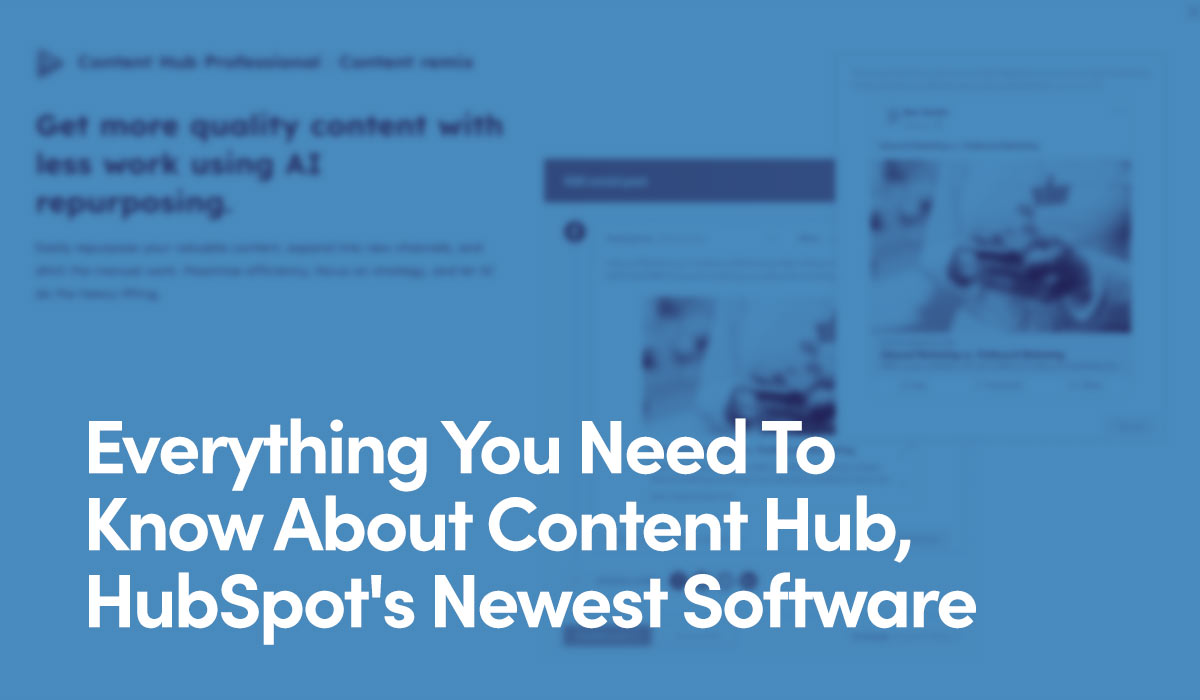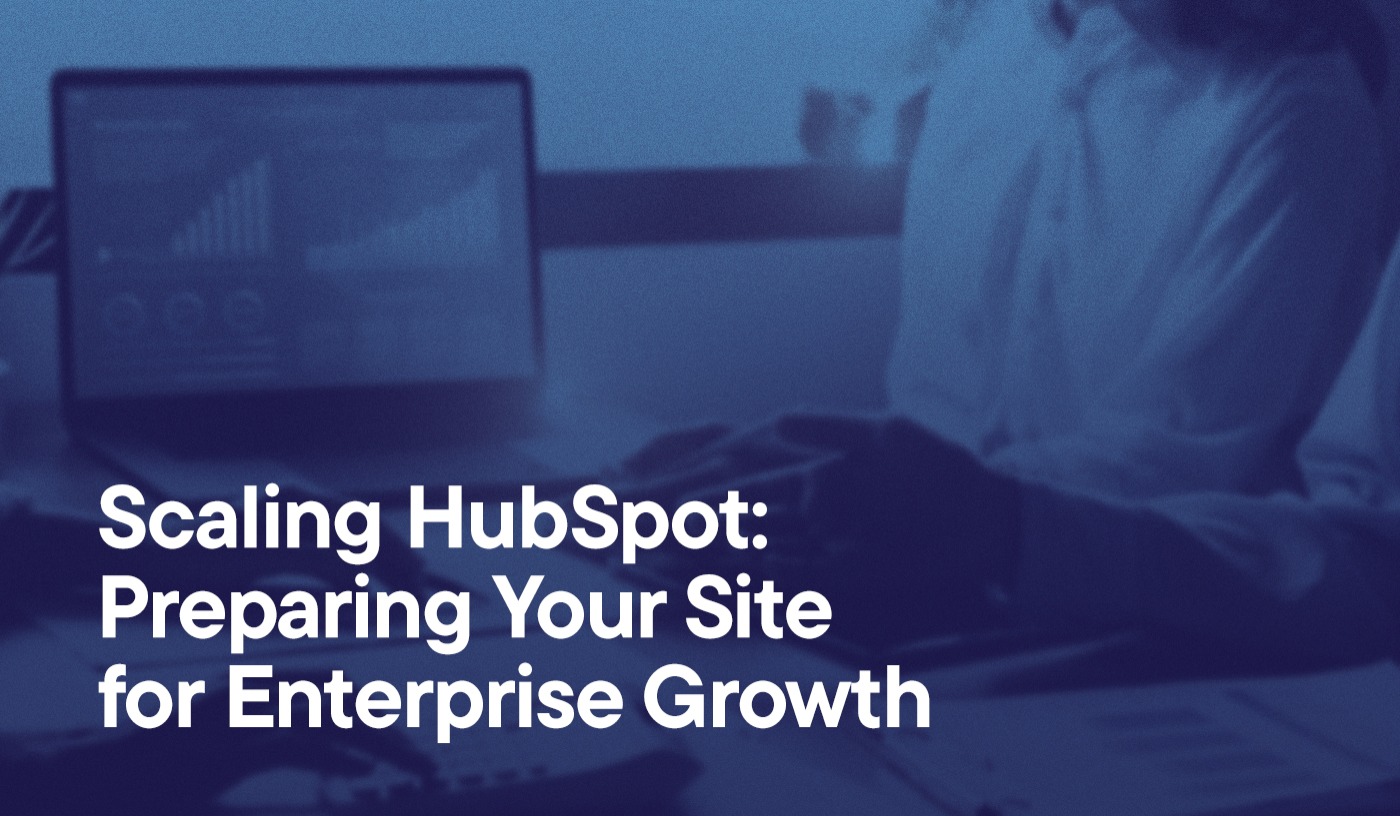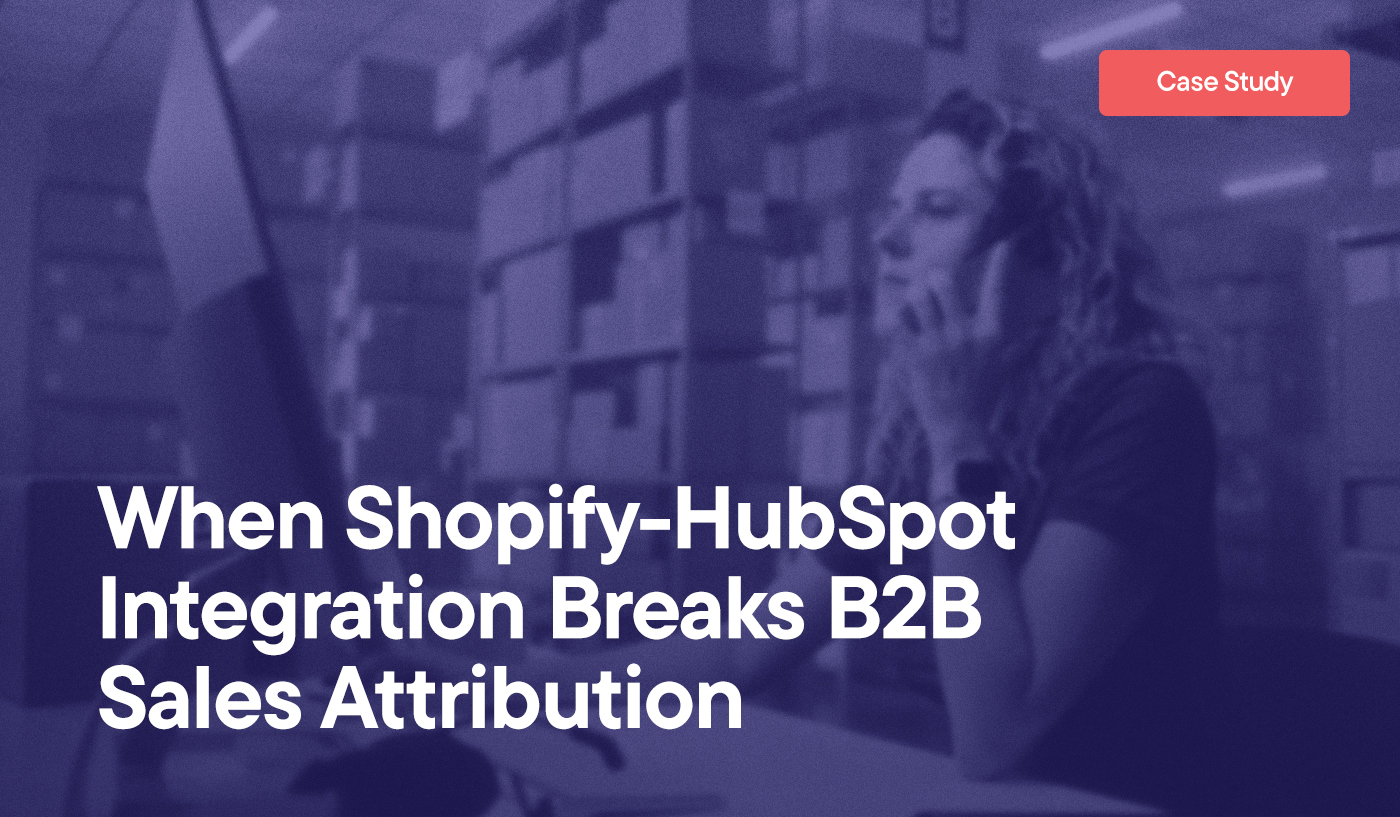In a bid to help businesses broaden their outreach amid changing online habits, HubSpot, the company that pioneered the concept of content-fueled inbound marketing, announced its latest software innovation, Content Hub.
The news comes as brands have noticed a significant shift in how their audiences are consuming content and the need to streamline workflows amid the explosive growth of generative AI.
To simplify content workflows and enable seamless multi-platform publishing, the software provides a one-stop-shop for users to reach their audiences.
In order to help businesses expand their brand, HubSpot is integrating its content management system (CMS) into Content Hub. This will enable businesses to easily create landing pages and other site content while also engaging with audiences at different stages of the customer journey.
HubSpot is effectively telling us that user behaviors are evolving, and so should we.
The announcement comes nearly four years to the day HubSpot launched CMS Hub to empower businesses and make it easier for them to scale by offering a content management system integrated with broader marketing efforts.
What is Content Hub?
Content Hub is an all-in-one solution that enables marketers to produce high-quality content at scale across multiple channels. It replaces CMS Hub and inherits its site-building functionalities.
So, imagine a platform that simplifies your work process by bringing together all the tools you need in one place.
Instead of using multiple apps to complete tasks, users can perform all these functions within a single platform.
This effectively means near-complete control over the production process, from strategy to publishing. With generative AI’s help, users can devise entire campaigns, and create blog posts, pillars, emails, social posts, landing pages, and more, seemingly more efficiently.
And for the first time, you’ll be able to build your “brand voice” into the software, making it easier to message consistently across platforms.
It’s also important to note that HubSpot CMS isn’t going anywhere.
HubSpot customers can “upgrade” to Content Hub, which includes the company’s leading content management system.
Simply put, the new software supports omnichannel publishing efforts by providing everything you need in a single, unified location.
Content Hub Features
Here’s everything that HubSpot has announced so far:
- Image Generation
- AI Blog Post Generator
- Website Assistant
- Content Remix
- AI Translations
- Brand Voice
- Blog Post Narration
- Member Blogs
- Content Library
- Content Approval
- Content Embed
- Podcasts
These tools can’t replace what you do on a human level: engaging in strategic decision-making, producing top-of-the-line content, providing clear and concise messaging, and gathering insights into audience expectations and desires.
Let’s dive deeper into some of the newest additions to the HubSpot ecosystem:
Brand Voice
One of the biggest challenges for businesses is maintaining a consistent voice across all materials. Beyond achieving a unified tone, many brands find it difficult to define and capture their desired way of communicating with audiences. The brand voice feature empowers you to define your unique voice by either analyzing previous content or providing in-depth information and context for the tool to capture it accurately. Once set, Content Hub can then leverage this learning to help ensure that future content is consistent with that voice—whether it’s created by humans or AI-generated. Best of all, this can be applied across a variety of formats, including blogs, emails, SMS, and social media posts.
Content Remixing
Repurposing existing content for different formats becomes easier than ever. Content teams can effortlessly create and distribute different versions of their work across a variety of platforms and channels, such as social media, SMS, email, landing pages, audio, and more. That gives marketing teams the ability to create a single piece of content and have Content Hub lend a hand with promotion, including social media posts, email, SMS and landing page copy, and even audio elements—all of which have the potential to vastly improve not just output and production, but results.
Of course, quality still needs to be factored in. While these features can make a content team more efficient, they’re only as good as the inputs they get, and the editors reviewing their output. With that in mind, it’s vital to treat any AI feature as a productivity tool, and not the be-all end-all. Put another way: If you let the tools think for you, sooner or later, you’ll run into problems.
Image Generation
Similar to the remixing capabilities, Content Hub’s AI image generation tools will be able to create relevant artwork, diagrams and other visual elements with a click of a button—for blogs, social posts, marketing emails, landing pages, and more. And, unlike tools such as DALL-E, Content Hub doesn’t require specific prompts to be able to do so: it can generate these images based on the context of the content itself.
However, as with written content, we’d be remiss if we didn’t point out that monitoring quality is vital: your images are just as important as the copy you’re presenting to audiences. While this feature is undoubtedly a huge benefit—particularly for smaller teams—it may be some time before these tools can compete with professional designers for creating more complex artwork.
AI Blog Post Generator
To a certain extent, AI blog post generation has existed for a while within HubSpot, allowing users to create entire pieces, rewrite, expand or shorten specific sections, adjust tone, or suggest meta descriptions. Content Hub brings this functionality to the entire suite of content tools, allowing you to use it at scale as you target other platforms and media channels.
Post Narration
HubSpot is bringing audio storytelling into the mix. You’ll now be able to turn your copy into audio and customize how it’s delivered, potentially maximizing your reach. While we haven’t had a lot of time to experiment with this functionality, one thing we have learned already is that taking the time to adjust your text to better support audio narration is something to consider as you look to meet the needs of different audiences. We haven’t specifically tested the AI tools for this yet, but it’s a use case we’ll be keeping in mind as we dive further into the tools in the near future.
Podcasts
Podcasts aren’t for everyone. However, building on the post narration feature, HubSpot is making it easier to produce audio with AI tools—especially for those who easily want to repurpose written pieces. Producing podcasts is a creative pursuit, so it’s essential not to jump into it just for the sake of having an audio component for your brand. Take the time to experiment, conduct thorough research, and explore how this format can enhance your marketing strategies.
AI Translations
According to the company, Content Hub gives users the ability to easily translate entire pages and blogs with a simple click. And, unlike word-for-word translation tools such as Google Translate, Content Hub leverages AI for translation, meaning that carrying over tone and context should be simpler and easier too. Of course, it’s incumbent upon you to ensure translations are accurate, honestly reflect what you’re trying to say, and are devoid of potentially embarrassing errors—just as you would with anything else you put out to the world.

Why Is HubSpot Transitioning from CMS Hub to Content Hub?
As we’ve documented, changing online behavior, the explosion of generative AI, and audience fragmentation require not only a new perspective, but tools that help maximize reach—explaining why HubSpot is offering an all-in-one solution.
Quality content, regardless of where people find it, can help drive decisions at every stage of the buyer’s journey.
As such, this move is all about helping businesses navigate the complexities of modern marketing while removing friction from the content creation process. We now live in a world where people are just as likely to interact with a buying signal on TikTok or LinkedIn, as they are from a blog or email. Keeping up with that demand has strained resources in every corner of every industry, and Content Hub goes a long way toward helping businesses show up in more places without having to add resources to do so.
At the same time, these tools are only as good as the people using them. It’s still vital to understand your audience and their buying behaviors, produce relevant content to meet their needs at different stages of the buyer’s journey, across a variety of channels, and make changes based on how these different elements perform and convert.
Although Content Hub is powered by AI, you are the one who is in control.
Free HubSpot Portal Audit
Unlock the Full Potential of Your HubSpot Portal
Request A Portal Audit arrow_forwardWhat Else Do I Need to Know About Content Hub?
- Existing CMS Hub Customers: Content Hub requires an “upgrade.” If you’re happy with CMS Hub, HubSpot says you can continue to renew the software, and there won’t be any immediate changes. Existing CMS Hub customers will also have access to several new features, such as a gated library, gated blogs, basic blog post generator, AI website builder, AI image generation, and blog post narration. You will not have access to content remix, brand voice, podcasts, content embeds, AI translation, and custom blog post generator unless you upgrade.
- Content Hub Cost: Head over to HubSpot for all the important details, but as of its release, Content Hub’s cost ranges from $25 (starter), $500 (professional), and $1,500 (enterprise).
- HubSpot Unveils Marketing+: Marketing+ is a new bundle that combines Marketing Hub with Content Hub at a discounted rate. According to HubSpot, the bundle includes the best features of both hubs, helping to increase efficiency and revenue. Marketing+ is only available at the professional and enterprise level.
- Integration with WordPress: This was quite a surprise—and it underscores how integral content marketing is for brands looking to drive growth. Even if your website is hosted on platforms like WordPress, you can seamlessly access all the functionalities of Content Hub through subdomains or integrations.
The Hypha View
A constant refrain within the Hypha team is that “the future is awesome.” We see Content Hub as a major step toward that future—one where marketing teams can be faster and more agile than ever, bringing ideas to market across a variety of channels in less time than ever before.
The launch also ties into something we’ve been discussing for a long time: the power of an omnichannel approach to content marketing.
We initially crafted this strategy by examining the evolving landscape of search, as the market flooded with an increasing number of generative AI tools. That led to deeper discussions about the future of search, especially with the move toward “zero-click” queries and the diminishing returns from the top-of-the-funnel SEO approaches that many marketers have been dining on for years.
As a result, the way we produce content has changed significantly. For instance, we continue to utilize data-driven strategies to craft content aimed at achieving organic visibility on top search engines like Google; we’ve just shifted our focus further down the funnel, trying to attract buyers at a point where their queries are geared more toward finding solutions to their problems, rather than at the point where they’re trying to define those problems—information that AI is especially good at providing. While many in the industry worry that AI will replace content marketing, this shift has, if anything, reinforced our belief in unique, quality, informative content, allowing us to meet audiences wherever they are on the customer journey.
So the release of Content Hub aligns with our “publish everywhere” approach. And once we get our hands on the new tools, we expect we’ll be able to supercharge those efforts, enabling us to think more strategically about the content we’re producing and to meet our clients’ customers with the right message at the right time, wherever they choose to spend their time online. By serving relevant content that’s optimized for their preferred platforms, we believe that users are more likely to engage with it and, once they land on our clients’ sites, to take the next step in the buyer’s journey—whether that’s requesting more information, or completing a purchase on the spot.
Of course, it’s important to establish clear guidelines and build trust with your audience—not everyone is comfortable with the idea that the content they’re consuming may have been created by an AI. As such, it may be beneficial to publish an AI usage policy, outlining strict policies and requirements.
As far as we’re concerned, Content Hub is arriving at just the right time. But it’s not a magic wand; in fact, our view is that the rise of AI—and the accompanying proliferation of content we’re already seeing—means that businesses need to work harder than ever to understand their audiences to compete effectively for their attention. While Content Hub allows us to do more, and faster, the real differentiator that will drive success in the coming months and years is the ability to use it strategically to deliver results.
Hypha Development is a New York-based HubSpot Partner Agency specializing in engineering Inbound Marketing & Strategic Content solutions to get you more customers, convert more leads, and help you achieve sustainable growth. Contact our team today!



